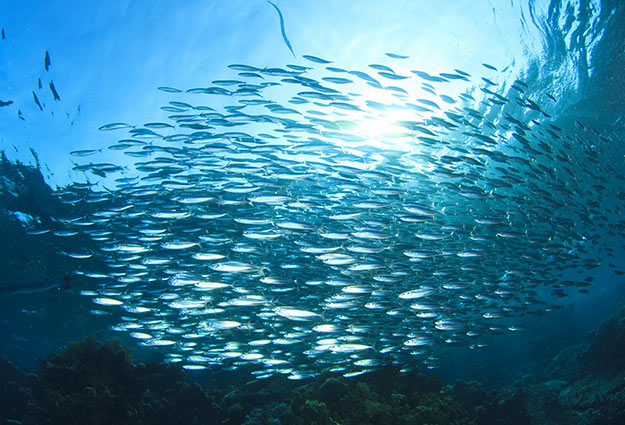Research Projects
Mechanisms for Low-Frequency Variability of Forage Fish
The impacts of climate-scale variability on fish resources have recently become widely accepted. One of the most compelling examples of climate-driven fish stock changes is the fluctuation of sardines and anchovies in Pacific and Atlantic boundary systems. Landings of sardines show synchronous variations off Japan, California, Peru, and Chile, with populations flourishing for 20 to 30 years and then practically disappearing for similar durations. Over the last 30 years, diverse observations have been integrated into several hypotheses. However, due to the multi-decadal nature of the variability, hypothesis testing of time series observations has proven difficult and what remains elusive is a mechanistic basis for how the physics, biogeochemistry, and biology combine to result in the various patterns of synchronous variability across widely separated systems.
In this international collaborative project, we have developed a coupled climate-to-fish-to-fishing modeling tool that is designed to synthesize and extrapolate the existing piece-wise process-level data on the physics, lower trophic levels, and fish ecology and behavior. The modeling system consists of a global climate model forcing a regional ocean model, which includes a concentration-based lower trophic level model, an individual based model for the fish and an agent-based fishing fleet model. The system has been implemented in the California Current System and in the Kuroshio-Oyashio system off Japan with plans for adaptation to other coastal systems.

